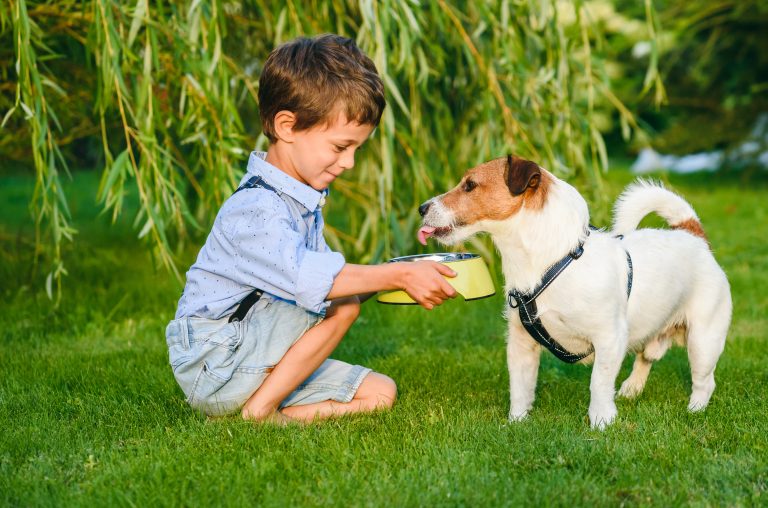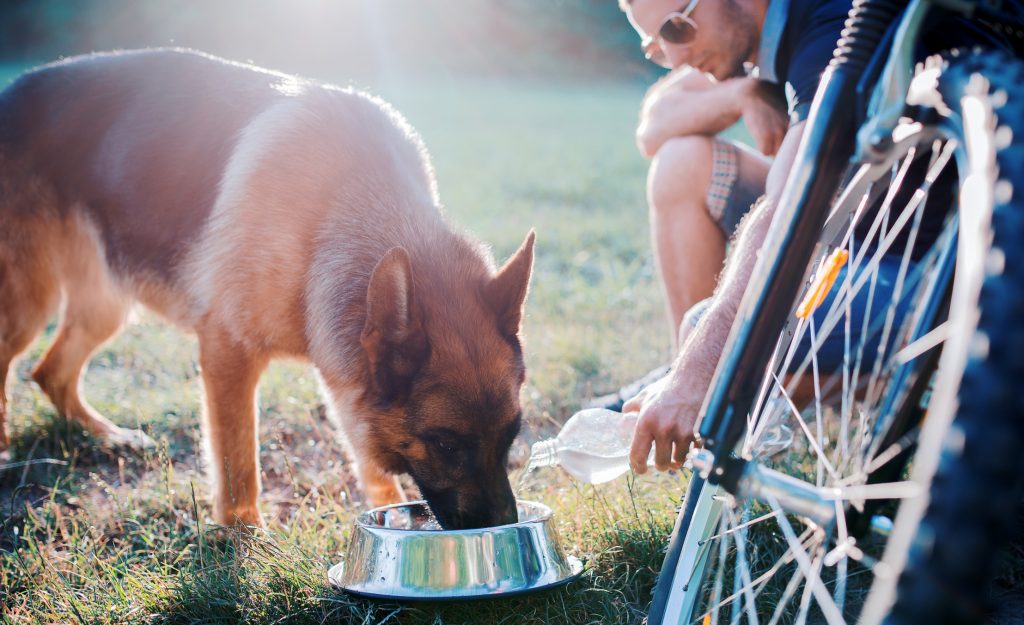July has been designated as Pet Hydration Awareness Month. As the temperatures start to soar and we consider soaking up the rays of sunshine, we need to think about the effect the heat can have on our four-legged friends.
Whether you’re planning a summer road trip with your pup or simply intending to relax around your home during these sweltering days, it is vital to know how much water your dog should be drinking on a daily basis and spot the signs of dehydration.
As humans, we have been told we should consume approximately eight glasses of water each day. How does this vary for dogs?
How much water should a dog drink per day?
In general, your dog should drink approximately one ounce of water for each pound of body weight. Make sure their water bowl is filled with fresh, clean water and wash the bowl at least twice a day.
There are several factors which could affect the amount of water your dog needs to drink. These can include:
- Activity. If you have an extremely active breed or a dog who simply loves to run around, your pup will require more water to compensate for the water loss during exercise.
- Weather. On a particularly hot or humid day, your dog is less likely to retain water due to an increased level of panting and salivation.
- Diet. If your pup predominantly eats canned dog food, remember that these typically contain up to 65-70% water – conversely, a dog who eats dry food will require additional water to stay hydrated.

Even if the rule of thumb indicates that an ounce of water for every pound of body weight is sufficient, you should still keep a close watch on your dog to ensure they are receiving the water they need.
In the summer, it can be useful to have a separate water bowl in your yard to ensure your dog doesn’t need to wait to go back into the house to drink.
How can I tell if my dog is dehydrated?
Every mammal needs the right amount of water to function properly. Unlike humans, your dog can’t just grab a bottle of water from the refrigerator – as their guardians, it is up to us to make sure they have adequate water available.
If your dog is exhibiting a combination of the following symptoms, it could be a sign they are dehydrated:
- Panting
- Vomiting
- Diarrhea
- Loss of appetite/reduced appetite
- Tiredness/lethargy
- Dry nose or dry, sticky gums
- Loose, wrinkled skin
- Excessive drooling
If you suspect your pet is even slightly dehydrated, provide them with a fresh bowl of cold water and encourage them to drink from it.
What causes dehydration in dogs?
Even if you are diligent and provide your pooch with plenty of water, there may be other reasons why your dog is suffering from dehydration.
As one example, a consequence of a bout of vomiting or diarrhea is a loss of water within your dog’s body. Other minor illnesses or fevers can contribute to this, too.
Dehydration could also be an indicator of a wider and more serious problem, such as kidney problems (for example, kidney disease) or diabetes; in these scenarios, the most sensible solution is to take your dog to the veterinarian to be assessed, even if it is just as a precaution.

Other precautionary tales
Aside from the need to keep our pets hydrated, there are other things you can do to help them enjoy the summer months.
It sounds obvious, but it is still frustratingly common – never leave your pet unattended in your vehicle. Temperatures can rise to dangerous levels for dogs in just a matter of minutes, and it is actually illegal in some states to leave your pet alone in your car.
Not only can cars become dangerously hot, but asphalt and sidewalks can pose an additional danger for pets. Before you let your dog walk on any surface, test it with your hand and consider if it would be safe for them to walk on it – their sensitive paw pads are susceptible to burns.
Whilst summer is definitely the time for pool parties, remember that not every dog is a competent swimmer! Supervise any dog around a swimming pool, and if you plan to introduce them to water, do it slowly. Make sure your dog doesn’t drink the pool water, which contains chlorine.
And finally, speaking of parties, make sure any alcoholic beverage is kept well out-of-reach of your pets. Hydration is important – but it needs to be the right type of hydration! Alcohol is toxic for dogs and, at an absolute minimum, will result in sickness.
In summary
Summer is a time when all of us – humans and canines alike – can relax and enjoy ourselves and make the most of the better weather.
Importantly, we can do this whilst making sure our pets remain safe, healthy and well-hydrated!


You must be logged in to post a comment.